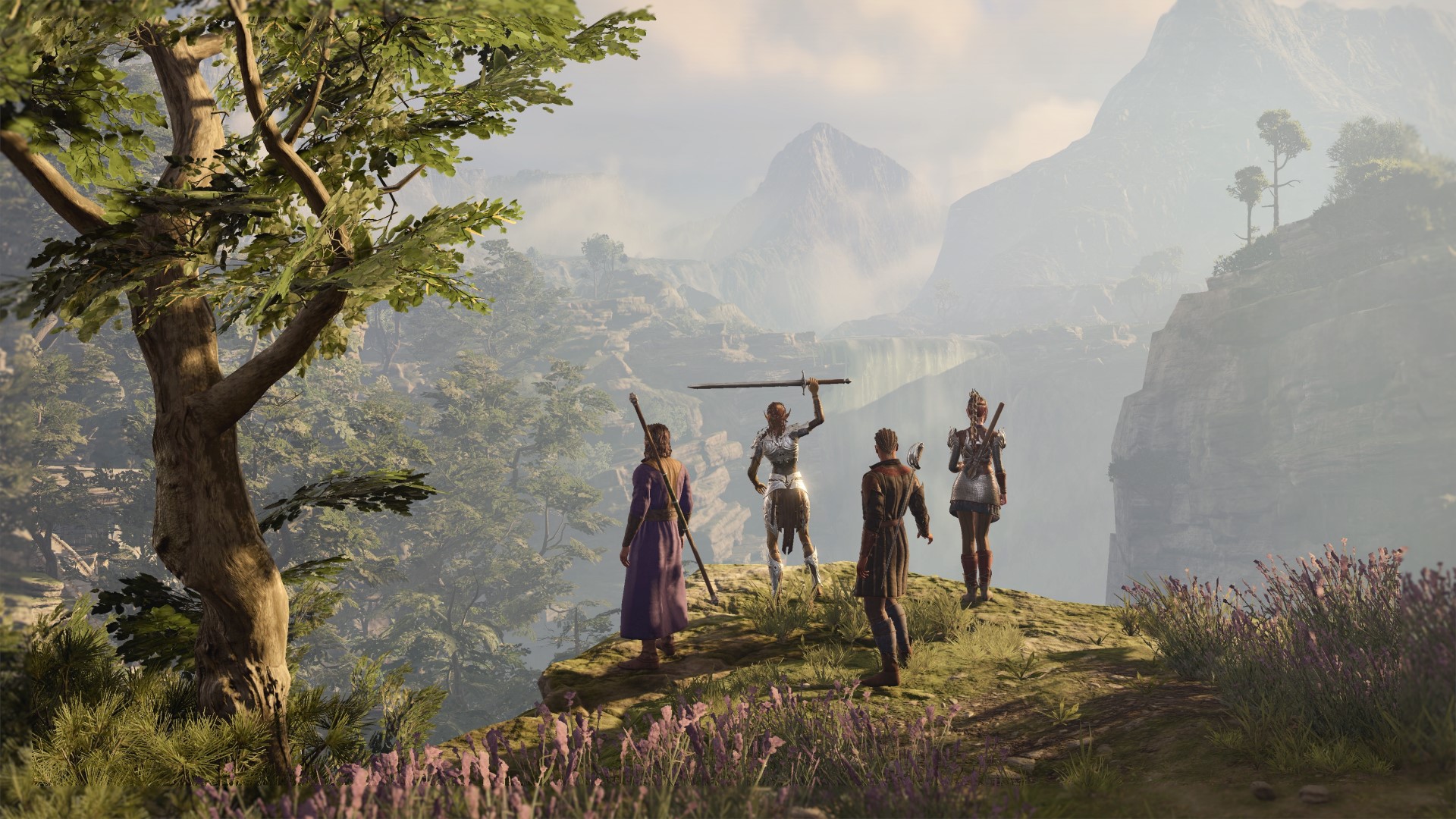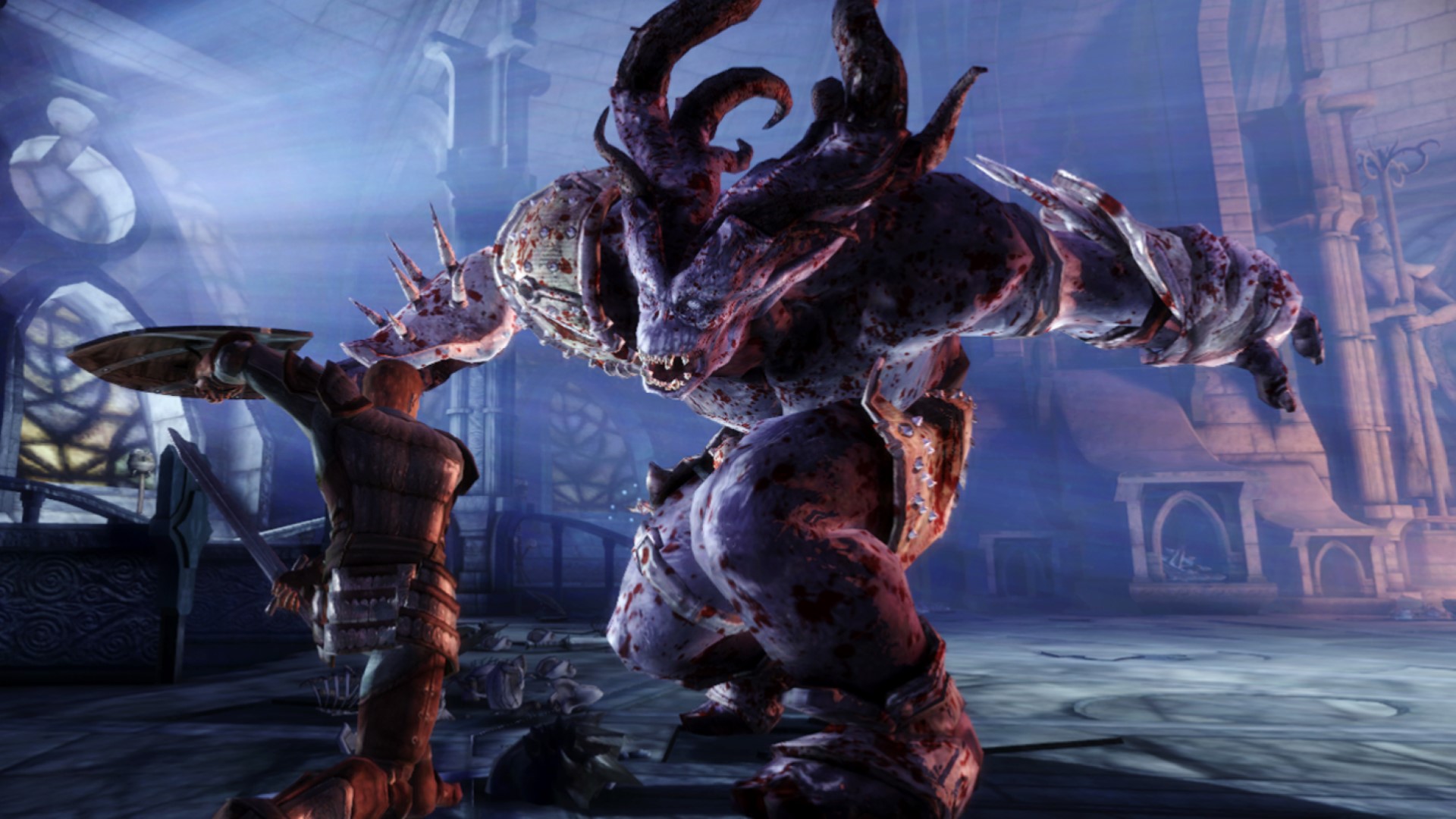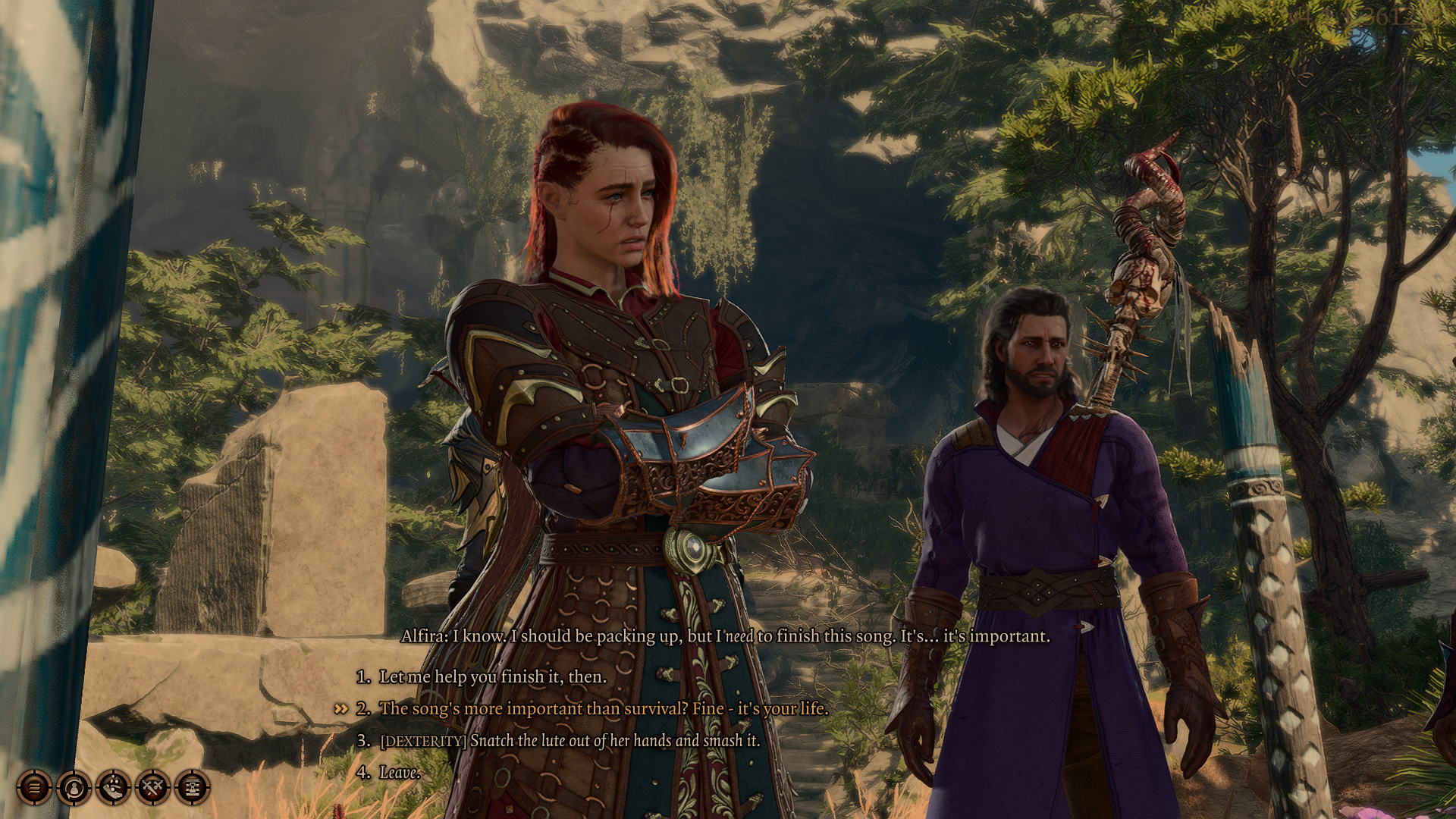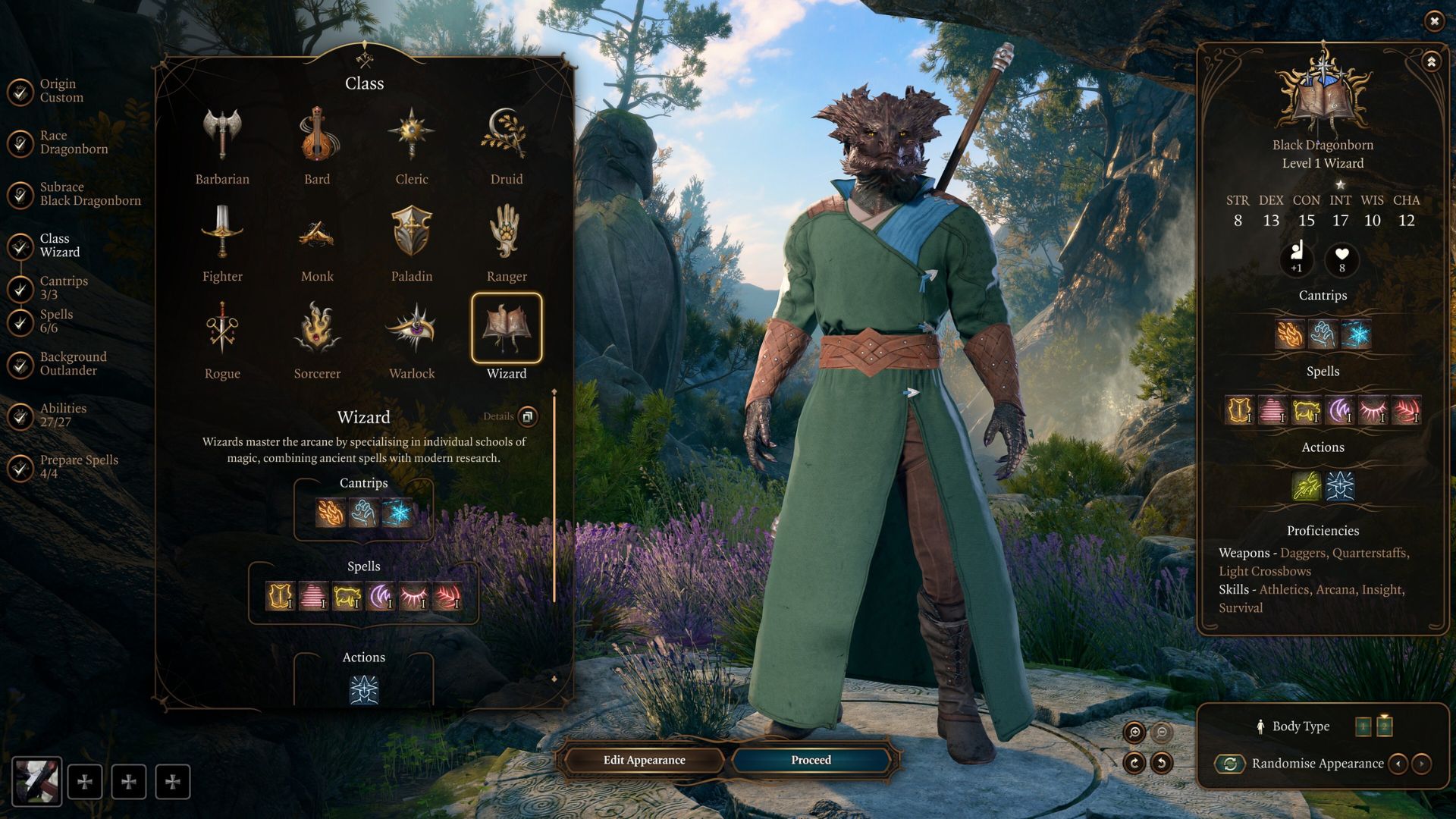Dragon Age: Origins walked so Baldur’s Gate 3 could dash
Original sin

Baldur’s Gate 3 is a smashing success, offering a choose-your-own-adventure story come to life. Cinematic conversations, bespoke interactions, and memorable characters line every moment of this grand fantasy adventure.
However, Baldur’s Gate 3 isn’t the first successful attempt to marry cinematic aspirations with the traditional branching narratives and simulationist world-building of CRPGs. 2009’s Dragon Age: Origins had a very similar mission statement, offering a spiritual successor to BioWare’s earlier Baldur’s Gate titles long before Larian took us back to the titular city (and its surrounding areas).
Despite coming from different developers, you can see the lineage. Baldur’s Gate 3 and Dragon Age: Origins almost seem like long-lost siblings. Both sought to bring a cinematic polish to the well-worn CRPG adventures of the past.
Dungeons & Dragons, the interactive storytelling hobby that spawned the world of the Baldur’s Gate series traditionally takes place in the theatre of the mind. Still, both BioWare and Larian took to using modern technology to bring characters and scenes to life in more tangible ways.
Naturally, Baldur’s Gate 3 benefits from 14 years of technical development since the release of Dragon Age: Origins, offering a degree of visual fidelity that was impossible in 2009. However, both titles strive towards the same ideal, bringing to life companions and enemies alike with setpieces and conversations full of animations, all of which are designed to bring about greater immersion.
Rhyming couplet

However, the parallels between the two titles don’t end at their cinematic aspirations. Baldur’s Gate 3 and Dragon Age: Origins offer rhyming stories, where characters are forced by tragic circumstances to take up the quest of a lifetime.
Baldur’s Gate 3 has our protagonist fall victim to a Mind Flayer tadpole, an eldrich parasite that offers power at the risk of Ceramorphosios, a horrific process that turns the tadpole’s victim into a sinister Mind Flayer.
Sign up for breaking news, reviews, opinion, top tech deals, and more.
In Dragon Age: Origins, the adventure turns on the Joining Ritual, where those who would fight the Darkspawn horde must imbibe a concoction that connects them to the Archdemon - a sinister overmind that controls the Darkspawn. This process, much like the introduction of a Mind Flayer tadpole, is usually fatal in the long run, despite offering special powers.
Do you embrace the darkness in pursuit of power, or do you stay the course, rejecting these tempting gifts?
Both serve not only as thematically similar plot devices but also perform a similar role in both stories’ structures. They are a call to adventure the protagonist must accept on pain of death. Since both titles allow for an impressively broad range of characters, an unrefutable call to adventure is necessary to keep the story coherent and speaks to each game’s urge to provide as open-ended an experience as possible.
Baldur’s Gate 3 and Dragon Age: Origins go on to spend plenty of time asking you exactly how comfortable you are drawing on this darkness that’s inside you and playing by its rules. It’s a tried and tested fantasy trope, going back to Frodo’s use of The One Ring in Tolkien’s The Lord of the Rings. Do you embrace the darkness in pursuit of power, or do you stay the course, rejecting these tempting gifts?
Between light and shadow

Fantasy stories like Baldur’s Gate 3 and Dragon Age: Origins may paint in broad brush strokes, but, thanks to this emphasis on inner darkness, the flights of fancy are kept grounded in the difficult choices and challenges that beset the protagonist and their allies. You might be on a derring-do quest for the forces of good (or if you’re a total baddie, seeking to lose friends and alienate people) but your characters have achingly detailed inner lives that talk of tragedy and struggles you’ll only half glimpse.
Both take the old CRPG fantasy formula and seek to elevate it beyond by-the-numbers dungeon crawling into something more emotionally resonant, full of choices, consequences, and memorable drama.
Do you side with a tyrant to oppose a greater evil? Do you sacrifice innocents to gain an edge in your struggle? Do the needs of the many really outweigh the needs of the few? Do you want to put extra Mindflayer parasites into your brain for access to more mind-bending psychic powers?

The emotionally fraught trolley problems in Dragon Age: Origins and Baldur’s Gate 3 are special, however, because, thanks to modern cinematics, we get to see the consequences of our actions, rather than just read about them.
This technique comes to a head in both titles’ final setpieces. Baldur’s Gate 3 and Dragon Age: Origins alike use their final missions as a chance to bring together all of their disparate hanging threads, with an emphasis on portraying the consequences not only of the player’s decisions but also the friendships they’ve made over the course of the game. It’s you and yours against insurmountable darkness.
It’s you and yours against insurmountable darkness
This is the essence of Baldur’s Gate 3, taking the old, reliable techniques of the CRPG and bringing them in line with modern cinematic tastes. However, its parallels with Dragon Age: Origins remind us that this isn’t a novelty, but rather the continuation of a trend of cinematic RPGs which have traditions all of their own.
Dragon Age: Origins’ experimentation with cinematic storytelling paved the way for Baldur’s Gate 3’s cinematic displays with an interactive theatre all of its own. In doing so BioWare created a legacy that sits alive and well at the heart of Larian’s latest project.
Baldur's Gate 3 is one of the best RPGs we've seen in recent memory. If you're wondering what to play next, however, why not check out our list of the most anticipated upcoming games.

An editor and freelance journalist, Cat Bussell has been writing about video games for more than four years and, frankly, she’s developed a taste for it. As seen on TechRadar, Technopedia, The Gamer, Wargamer, and SUPERJUMP, Cat’s reviews, features, and guides are lovingly curated for your reading pleasure.
A Cambridge graduate, recovering bartender, and Cloud Strife enjoyer, Cat’s foremost mission is to bring you the best coverage she can, whether that’s through helpful guides, even-handed reviews, or thought-provoking features. She’s interviewed indie darlings, triple-A greats, and legendary voice actors, all to help you get closer to the action. When she’s not writing, Cat can be found sticking her neck into a fresh RPG or running yet another Dungeons & Dragons game.